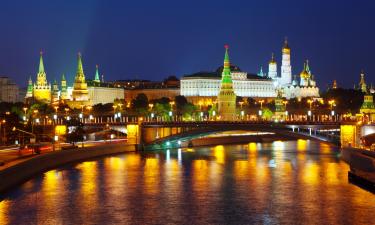China must take advantage of Brazil to have BRIC renamed as CRIB
By Marc Chandler

Brazil, Russia, India and China, now collectively known as the BRIC countries, will hold a summit in Russia on June 16th. Besides the Goldman Sachs invented moniker, these countries have very little in common except for the fact that they believe, to seemingly varying degrees of intensity, that they deserve greater influence in the conduct of world affairs than they currently have.
And given the enormity of US power, as hard-core realists, they know any increase in their power and influence will come at the expense of America’s.
The BRICs are on different sides of the terms of trade trends. Brazil and Russia benefit from higher commodity prices, while India and China prefer lower prices. All except Russia are in the World Trade Organization. All but Brazil have nuclear weapons. While India and Brazil are democracies, China surely is not. While it may be premature to draw hard and fast conclusions about Russia, the direction does not look particularly promising.
Russia and China are permanent members of the United Nations Security Council. With their veto power there, they arguably have achieved greater political influence than in the economic sphere. Russian and Chinese influence is often sought in regional issues, like the Caucuses and North Korea. For their part, Brazil and India have quite different foreign policies.
For Brazil, its immediate surroundings are considerably more peaceful than in Eastern and Central Europe, where the end of an empire has seen the birth of new states. India’s foreign policy challenges are dominated by Pakistan. Security Council membership remains in the realm of aspirations.
One of the most important reasons why the BRICs do not have the economic clout that they would like is frankly they don’t deserve it. Goldman Sachs had a story (and more) to sell with its BRICs concept, but those same letters spell a real word, CRIB. The point is that the countries, outside of China, are not among the largest.
According to Bloomberg data, at the end of last year, China was the fourth largest economy ($3.2 trillion), behind the US, Japan, and Germany. This of course takes the Chinese data at face value, and given the often large gaps between energy production and reported GDP growth, as well as the amazing consistency of the pace of growth, many often cast a suspicious eye on Chinese data.
With a GDP of $1.3 trillion in 2008, Brazil was the 10th largest economy, though it is roughly half the size of France, which is the 6th largest economy. Russia and India were neck-and-neck for 11th and 12th places with each having produced about $1.2 trillion of goods and services last year. Spain’s economy is nearly 20% bigger than Russia’s and India’s, and it is the 8th largest economy.
Together the BRICs account for a little more than 12% of the world’s GDP, and China alone accounts for half of that.
The BRICs are also small in terms of the depth of the capital markets. Together, according to Bloomberg data, they account for a little more than 6% of the world equity capitalization (MSCI World Index). What equities that are truly tradable are very limited and concentrated in a few names. Often the markets lack the kind of transparency that many Western investors are familiar with, even given the financial crisis.
There are various capital controls and the BRIC’s currencies are not freely convertible or tradable. The banks have managed to partially circumvent the restrictions of the domestic (on-shore) market by creating a parallel off-shore market and non-deliverable forward contracts. Rydex’s CurrencyTrust ETF that tracks the ruble (XRU) was launched at the end of last year and has drawn little interest. It boasts a lowly $5 million market cap (assets under management).
Click here to read the full text of the article.
Subscribe to Pravda.Ru Telegram channel, Facebook, RSS!





